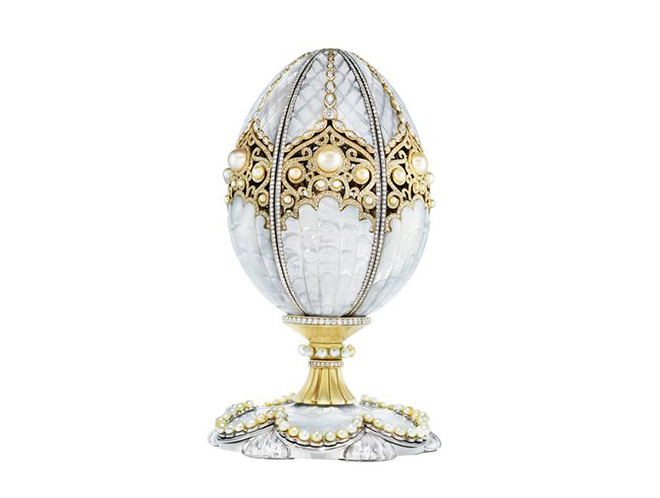The story of this Russian jeweller is a fascinating one. Peter Carl Fabergé’s magnificent Eggs capture the era of Catherine the Great, the Romanov, its dynasty and their unparalleled excesses. Considered one of the most renown goldsmith in the world, he created more than 50 Imperial Eggs between 1885 and 1917. Two more were planned for Easter 1918, but were not delivered, due to the Russian Revolution.
This story begins in 1870, when Fabergé becomes the head of a family owned jewellery company in San Petersburg. After winning a gold medal in the Panrussian Expo 1882, he was named official jeweller of the Royal Family.

For Easter 1883, Tsar Alexander III commissioned him an egg for his wife, Mary. The gift was an egg with platinum shelling that held inside a small golden egg. When opened, one would find a miniature chicken wearing a replica of the Russian Imperial crown. Tsarina Maria liked it so much she commissioned Faberge to make one for each Easter.

Fabergé was inspired by different artistic movements, such as antique Russian, greek, Renaissance, Baroque, Modernism or Art Nouveau. Also in works of art he saw in his travels around Europe.

There were also eggs created to commemorate specific events, such as the launch of the trans-Siberian Railway, the coronation of Tsar Nicolas II and other anniversaries.

Some held inside The Uspensky Cathedral, the imperial yacht Standart, the Palace of Gatchina or Alexander’s Palace. Image: Palace of Gatchina egg

But what happened after the revolution? The Fabergé family left Russia and after the death of Peter Carl Faberge in Switzerland two years later, the Imperial eggs were scattered widely. The Fabergé trademark was since sold several times to several companies and seven of the eggs were lost in the mists of history.
But something extraordinary happened. The past years had witnessed the silent rebirth of the brand. The brand has been steered in the right direction, repositioning his heritage to offer a contemporary approach to their extraordinary jewellery pieces.
Most of us won’t be getting a ruby encrusted egg this Easter. But it’s still great to know we can can still enjoy the beauty of Fabergé. London is home to a small number as part of the Queen’s Collection, having been purchased by King George V and his wife Mary. In London, there is also the contemporary Fabergé shop, and Bond Street Jewellers Bentley & Skinner has recently opened a Fabergé room full of ‘objects du fantasie.’












